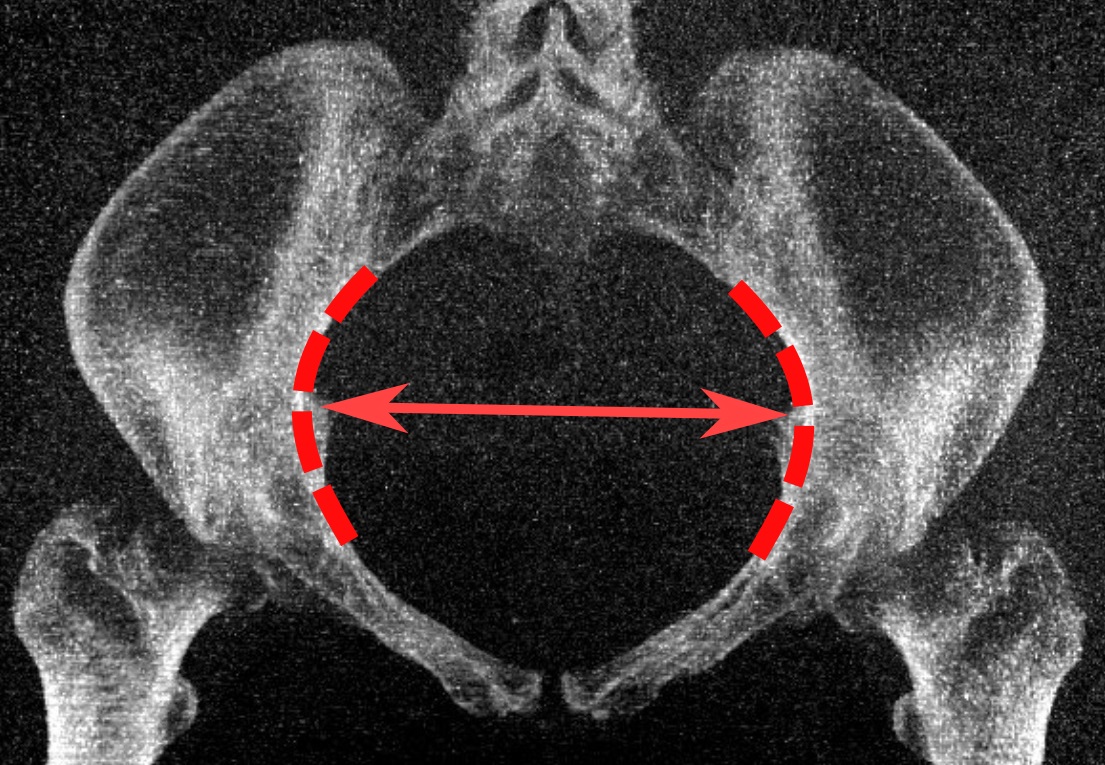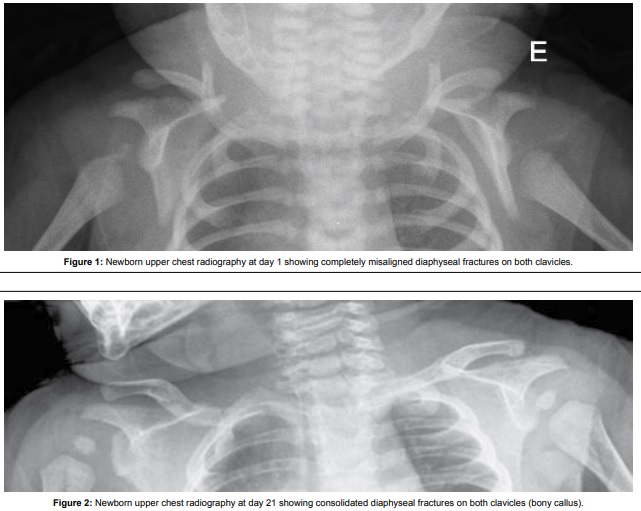|
Posterior Shoulder
Posterior shoulder in obstetrics refers to the shoulder of the fetus other than the anterior shoulder. Thus, the posterior shoulder faces the rectum of the mother during delivery. Whether left or the right shoulder becomes the posterior shoulder is dependent upon the original position of the fetus. It is known as the posterior shoulder as it faces the posterior of the mother. This distinction between the anterior and the posterior shoulder is important as the anterior shoulder is delivered first. See also * Anterior shoulder * Fetal relationship * Mechanism of vaginal birth * Shoulder dystocia Shoulder dystocia is when, after vaginal delivery of the head, the baby's anterior shoulder gets caught above the mother's pubic bone. Signs include retraction of the baby's head back into the vagina, known as "turtle sign". Complications for the ... References {{Reflist Presentations and positions in childbirth Obstetrics Midwifery ... [...More Info...] [...Related Items...] OR: [Wikipedia] [Google] [Baidu] |
Obstetrics
Obstetrics is the field of study concentrated on pregnancy, childbirth and the postpartum period. As a medical specialty, obstetrics is combined with gynecology under the discipline known as obstetrics and gynecology (OB/GYN), which is a surgical field. Main areas Prenatal care Prenatal care is important in screening for various complications of pregnancy. This includes routine office visits with physical exams and routine lab tests along with telehealth care for women with low-risk pregnancies: Image:Ultrasound_image_of_a_fetus.jpg, 3D ultrasound of fetus (about 14 weeks gestational age) Image:Sucking his thumb and waving.jpg, Fetus at 17 weeks Image:3dultrasound 20 weeks.jpg, Fetus at 20 weeks First trimester Routine tests in the first trimester of pregnancy generally include: * Complete blood count * Blood type ** Rh-negative antenatal patients should receive RhoGAM at 28 weeks to prevent Rh disease. * Indirect Coombs test (AGT) to assess risk of hemolyti ... [...More Info...] [...Related Items...] OR: [Wikipedia] [Google] [Baidu] |
Fetus
A fetus or foetus (; plural fetuses, feti, foetuses, or foeti) is the unborn offspring that develops from an animal embryo. Following embryonic development the fetal stage of development takes place. In human prenatal development, fetal development begins from the ninth week after fertilization (or eleventh week gestational age) and continues until birth. Prenatal development is a continuum, with no clear defining feature distinguishing an embryo from a fetus. However, a fetus is characterized by the presence of all the major body organs, though they will not yet be fully developed and functional and some not yet situated in their final anatomical location. Etymology The word '' fetus'' (plural '' fetuses'' or '' feti'') is related to the Latin '' fētus'' ("offspring", "bringing forth", "hatching of young") and the Greek "φυτώ" to plant. The word "fetus" was used by Ovid in Metamorphoses, book 1, line 104. The predominant British, Irish, and Commonwealth spelling ... [...More Info...] [...Related Items...] OR: [Wikipedia] [Google] [Baidu] |
Anterior Shoulder
Anterior shoulder in obstetrics refers to that shoulder of the fetus that faces the pubic symphysis of the mother during delivery. Depending upon the original position of the fetus, either the left or the right shoulder can be the anterior shoulder. It is known as the anterior shoulder as it faces the anterior of the mother. This distinction between the anterior and the posterior shoulder is important as the anterior shoulder is delivered first. See also * Posterior shoulder * The mechanics of birth * Shoulder dystocia Shoulder dystocia is when, after vaginal delivery of the head, the baby's anterior shoulder gets caught above the mother's pubic bone. Signs include retraction of the baby's head back into the vagina, known as "turtle sign". Complications for the ... * Fetal relationship References Obstetrics Presentations and positions in childbirth Midwifery {{human-repro-stub ... [...More Info...] [...Related Items...] OR: [Wikipedia] [Google] [Baidu] |
Rectum
The rectum is the final straight portion of the large intestine in humans and some other mammals, and the gut in others. The adult human rectum is about long, and begins at the rectosigmoid junction (the end of the sigmoid colon) at the level of the third sacral vertebra or the sacral promontory depending upon what definition is used. Its diameter is similar to that of the sigmoid colon at its commencement, but it is dilated near its termination, forming the rectal ampulla. It terminates at the level of the anorectal ring (the level of the puborectalis sling) or the dentate line, again depending upon which definition is used. In humans, the rectum is followed by the anal canal which is about long, before the gastrointestinal tract terminates at the anal verge. The word rectum comes from the Latin '' rectum intestinum'', meaning ''straight intestine''. Structure The rectum is a part of the lower gastrointestinal tract. The rectum is a continuation of the sigmoi ... [...More Info...] [...Related Items...] OR: [Wikipedia] [Google] [Baidu] |
Position (Obstetrics)
In obstetrics, position is the orientation of the fetus in the womb, identified by the location of the presenting part of the fetus relative to the pelvis of the mother. Conventionally, it is the position assumed by the fetus before the process of birth, as the fetus assumes various positions and postures during the course of childbirth. Positions Depending upon which part of the fetus is expected to be delivered first (fetal presentation), there are many possible positions: * Vertex presentation with longitudinal lie: * Breech presentation with longitudinal lie: #Left sacrum anterior (LSA)—the buttocks, as against the occiput of the vertex presentation, like close to the vagina (hence known as breech presentation), which lie anteriorly and towards the left. #Right sacrum anterior (RSA)—the buttocks face anteriorly and towards the right. #Left sacrum posterior (LSP)—the buttocks face posteriorly and towards the left. #Right sacrum posterior (RSP)—the ... [...More Info...] [...Related Items...] OR: [Wikipedia] [Google] [Baidu] |
Posterior (anatomy)
Standard anatomical terms of location are used to unambiguously describe the anatomy of animals, including humans. The terms, typically derived from Latin or Greek roots, describe something in its standard anatomical position. This position provides a definition of what is at the front ("anterior"), behind ("posterior") and so on. As part of defining and describing terms, the body is described through the use of anatomical planes and anatomical axes. The meaning of terms that are used can change depending on whether an organism is bipedal or quadrupedal. Additionally, for some animals such as invertebrates, some terms may not have any meaning at all; for example, an animal that is radially symmetrical will have no anterior surface, but can still have a description that a part is close to the middle ("proximal") or further from the middle ("distal"). International organisations have determined vocabularies that are often used as standard vocabularies for subdisciplines of anatomy ... [...More Info...] [...Related Items...] OR: [Wikipedia] [Google] [Baidu] |
McGraw-Hill
McGraw Hill is an American educational publishing company and one of the "big three" educational publishers that publishes educational content, software, and services for pre-K through postgraduate education. The company also publishes reference and trade publications for the medical, business, and engineering professions. McGraw Hill operates in 28 countries, has about 4,000 employees globally, and offers products and services to about 140 countries in about 60 languages. Formerly a division of The McGraw Hill Companies (later renamed McGraw Hill Financial, now S&P Global), McGraw Hill Education was divested and acquired by Apollo Global Management in March 2013 for $2.4 billion in cash. McGraw Hill was sold in 2021 to Platinum Equity for $4.5 billion. Corporate History McGraw Hill was founded in 1888 when James H. McGraw, co-founder of the company, purchased the ''American Journal of Railway Appliances''. He continued to add further publications, eventually establishin ... [...More Info...] [...Related Items...] OR: [Wikipedia] [Google] [Baidu] |
Anterior Shoulder
Anterior shoulder in obstetrics refers to that shoulder of the fetus that faces the pubic symphysis of the mother during delivery. Depending upon the original position of the fetus, either the left or the right shoulder can be the anterior shoulder. It is known as the anterior shoulder as it faces the anterior of the mother. This distinction between the anterior and the posterior shoulder is important as the anterior shoulder is delivered first. See also * Posterior shoulder * The mechanics of birth * Shoulder dystocia Shoulder dystocia is when, after vaginal delivery of the head, the baby's anterior shoulder gets caught above the mother's pubic bone. Signs include retraction of the baby's head back into the vagina, known as "turtle sign". Complications for the ... * Fetal relationship References Obstetrics Presentations and positions in childbirth Midwifery {{human-repro-stub ... [...More Info...] [...Related Items...] OR: [Wikipedia] [Google] [Baidu] |
Pelvimetry
Pelvimetry is the measurement of the female pelvis. It can theoretically identify cephalo-pelvic disproportion, which is when the capacity of the pelvis is inadequate to allow the fetus to negotiate the birth canal. However, clinical evidence indicate that all pregnant women should be allowed a trial of labor regardless of pelvimetry results. Indication Theoretically, pelvimetry may identify cephalo-pelvic disproportion, which is when the capacity of the pelvis is inadequate to allow the fetus to negotiate the birth canal. However, a woman's pelvis loosens up before birth (with the help of hormones). A Cochrane review in 2017 found that there was too little evidence to show whether pelvimetry is beneficial and safe when the baby is in cephalic presentation. A review in 2003 came to the conclusion that pelvimetry does not change the management of pregnant women, and recommended that all women should be allowed a trial of labor regardless of pelvimetry results. It considered rou ... [...More Info...] [...Related Items...] OR: [Wikipedia] [Google] [Baidu] |
Childbirth
Childbirth, also known as labour and delivery, is the ending of pregnancy where one or more babies exits the internal environment of the mother via vaginal delivery or caesarean section. In 2019, there were about 140.11 million births globally. In the developed countries, most deliveries occur in hospitals, while in the developing countries most are home births. The most common childbirth method worldwide is vaginal delivery. It involves four stages of labour: the shortening and opening of the cervix during the first stage, descent and birth of the baby during the second, the delivery of the placenta during the third, and the recovery of the mother and infant during the fourth stage, which is referred to as the postpartum. The first stage is characterized by abdominal cramping or back pain that typically lasts half a minute and occurs every 10 to 30 minutes. Contractions gradually becomes stronger and closer together. Since the pain of childbirth correlates with c ... [...More Info...] [...Related Items...] OR: [Wikipedia] [Google] [Baidu] |
Shoulder Dystocia
Shoulder dystocia is when, after vaginal delivery of the head, the baby's anterior shoulder gets caught above the mother's pubic bone. Signs include retraction of the baby's head back into the vagina, known as "turtle sign". Complications for the baby may include brachial plexus injury, or clavicle fracture. Complications for the mother may include vaginal or perineal tears, postpartum bleeding, or uterine rupture. Risk factors include gestational diabetes, previous history of the condition, operative vaginal delivery, obesity in the mother, an overly large baby, and epidural anesthesia. It is diagnosed when the body fails to deliver within one minute of delivery of the baby's head. It is a type of obstructed labour. Shoulder dystocia is an obstetric emergency. Initial efforts to release a shoulder typically include: with a woman on her back pushing the legs outward and upward, pushing on the abdomen above the pubic bone, and making a cut in the vagina. If these are ... [...More Info...] [...Related Items...] OR: [Wikipedia] [Google] [Baidu] |
Presentations And Positions In Childbirth
A presentation conveys information from a speaker to an audience. Presentations are typically demonstrations, introduction, lecture, or speech meant to inform, persuade, inspire, motivate, build goodwill, or present a new idea/product. Presentations usually require preparation, organization, event planning, writing, use of visual aids, dealing with stress, and answering questions. “The key elements of a presentation consists of presenter, audience, message, reaction and method to deliver speech for organizational success in an effective manner.” Presentations are widely used in tertiary work settings such as accountants giving a detailed report of a company's financials or an entrepreneur pitching their venture idea to investors. The term can also be used for a formal or ritualized introduction or offering, as with the presentation of a debutante. Presentations in certain formats are also known as keynote address. Interactive presentations, in which the audience is involved, ... [...More Info...] [...Related Items...] OR: [Wikipedia] [Google] [Baidu] |






